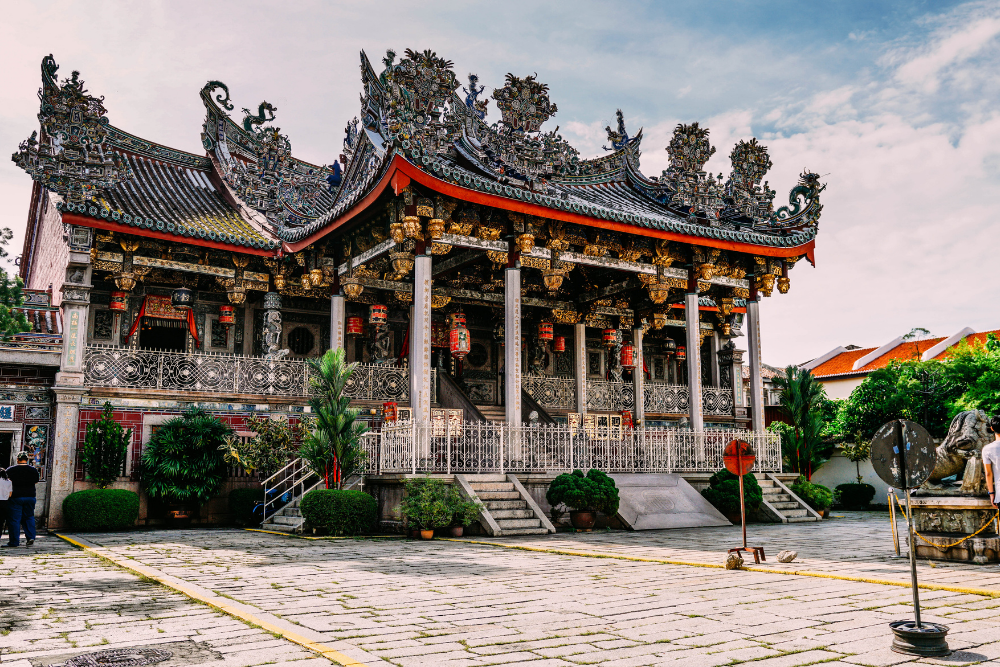Malaysia, a country known for its diverse cultures, rich history, and unique landscapes, is home to a wide range of ancient temples that offer a glimpse into the spiritual and architectural heritage of the region. These temples, which span various religions such as Buddhism, Hinduism, and Taoism, reflect the country’s multicultural society and provide travelers with a deeper understanding of Malaysia’s fascinating history and traditions. Whether nestled in bustling cities or hidden in tranquil landscapes, these ancient temples offer stunning architecture, peaceful surroundings, and a sense of reverence that makes them essential stops for any traveler.
Here’s a guide to some of the most remarkable ancient temples in Malaysia, each one holding its own special significance.
1. Batu Caves (Selangor)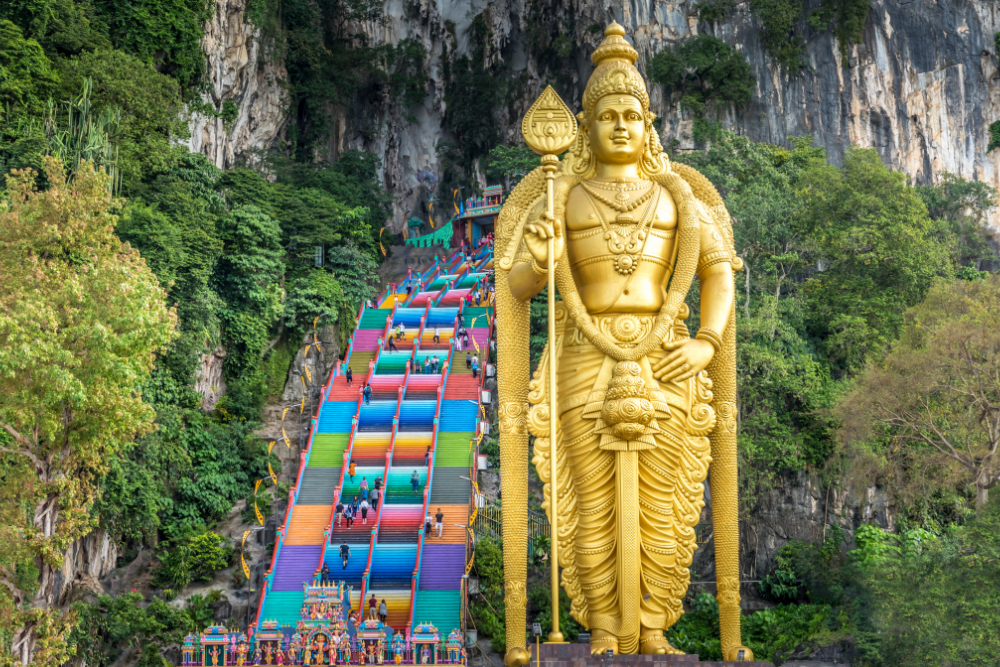
Perhaps one of Malaysia’s most iconic religious sites, the Batu Caves in Gombak, Selangor, are a must-see destination for anyone interested in exploring the spiritual heart of Malaysia. The Batu Caves complex includes several caves, each hosting a variety of Hindu shrines, with the Sri Subramaniyar Swamy Temple being the most prominent.
Why It’s Special:
- The Giant Statue: The towering Lord Murugan statue, standing at 42.7 meters, is one of the tallest statues of a Hindu deity in the world and serves as a symbol of devotion and strength.
- Sacred Caves: The Batu Caves are a series of limestone caves that have been used as a place of worship for over 150 years. The Temple Cave (the largest and most famous) is home to intricate Hindu shrines dedicated to Lord Murugan and other deities.
- Cultural Significance: The Batu Caves are an important pilgrimage site for Hindus, especially during the annual Thaipusam festival, when thousands of devotees gather to make offerings and participate in religious rituals.
Tips for Visiting:
- Be prepared for a climb up 272 steps to reach the Temple Cave.
- Watch out for the mischievous monkeys that inhabit the area, as they can sometimes snatch food or belongings.
2. Kek Lok Si Temple (Penang)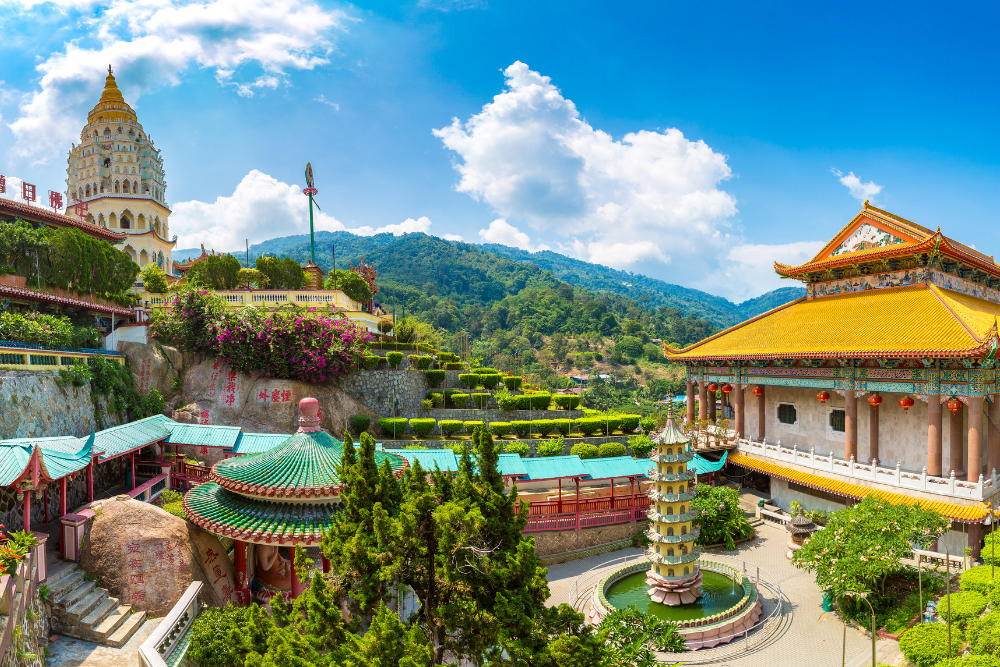
Located in Air Itam on Penang Island, the Kek Lok Si Temple is the largest Buddhist temple in Malaysia. Built during the late 19th century, the temple is a sprawling complex of shrines, prayer halls, and pagodas, and is one of the most important Buddhist pilgrimage sites in the country.
Why It’s Special:
- Stunning Architecture: The temple is a fusion of Chinese, Thai, and Burmese architectural styles, with intricate carvings, beautiful sculptures, and colorful decorations.
- The Pagoda of 10,000 Buddhas: The Pagoda of 10,000 Buddhas is a seven-story structure that symbolizes the harmony between Buddhism and Chinese traditions. The pagoda also offers panoramic views of Penang Island from its higher levels.
- The Avalokiteshvara Statue: At the base of the temple is a towering 30.2-meter statue of Kuan Yin, the Goddess of Mercy, making it one of the tallest statues in Southeast Asia.
Tips for Visiting:
- If you visit during the Chinese New Year, the temple is beautifully illuminated with thousands of lanterns, creating a magical atmosphere.
- Take the cable car ride up to the temple for stunning views of the surrounding area.
3. Sri Mahamariamman Temple (Kuala Lumpur)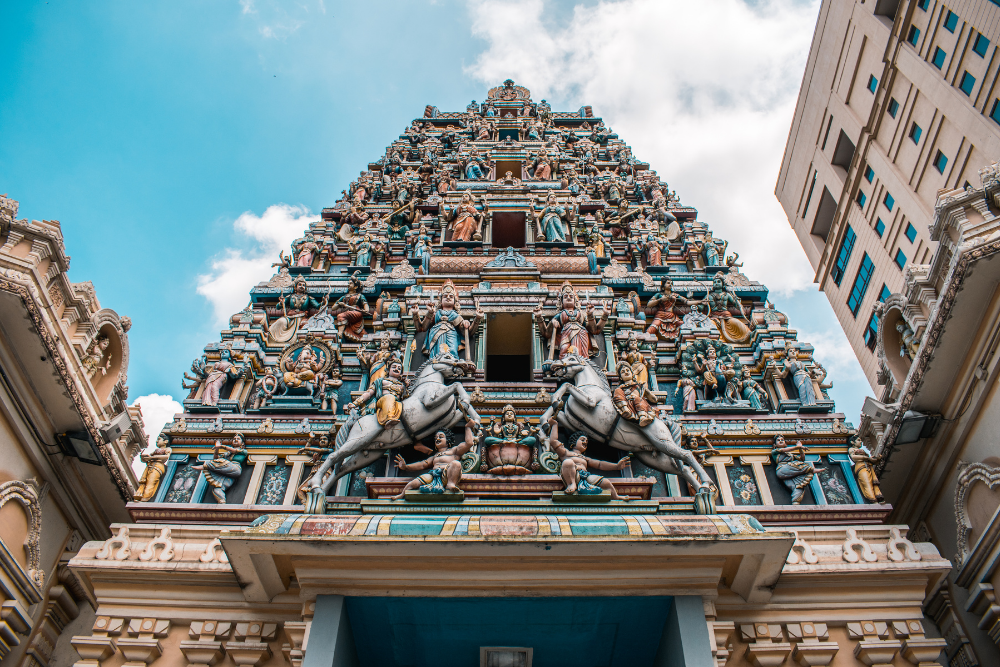
Located in the heart of Kuala Lumpur, the Sri Mahamariamman Temple is the oldest and most significant Hindu temple in the city. Founded in 1873, it stands as a testament to the city’s early Tamil immigrant community and their devotion to the goddess Mariamman.
Why It’s Special:
- Dravidian Architecture: The temple’s striking architecture follows the traditional Dravidian style, with intricate carvings of Hindu gods and deities adorning its entrance. The colorful Raya Gopuram (gateway tower) is a standout feature and is adorned with over 200 figures of gods and goddesses.
- Rich History: The temple was originally built to serve the growing Tamil community in Kuala Lumpur, and it continues to be an important religious and cultural hub for Hindus in the region.
- Vibrant Atmosphere: The temple is often bustling with activity, especially during religious festivals such as Deepavali and Thaipusam, when it hosts large celebrations and processions.
Tips for Visiting:
- Respect the temple’s dress code by wearing modest clothing when visiting.
- If you’re in Kuala Lumpur during Thaipusam, it’s an extraordinary sight to witness the vibrant processions and rituals that take place here.
4. Thian Hock Keng Temple (Penang)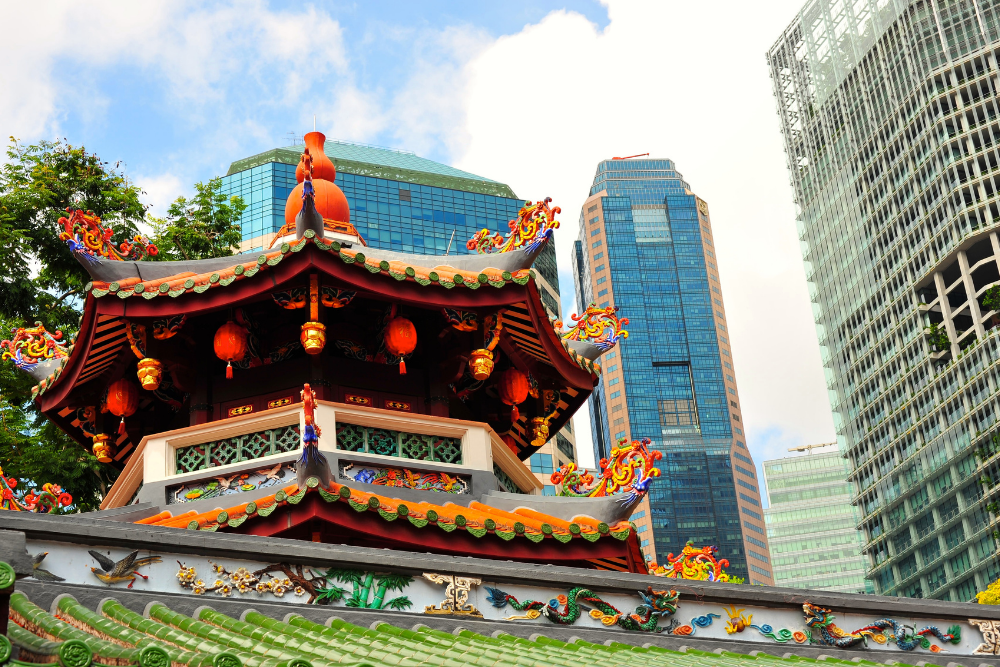
Located in George Town, Penang, the Thian Hock Keng Temple is one of the oldest and most important Taoist temples in Malaysia. It was built in 1850 by early Chinese immigrants to honor the Taoist goddess Ma Zu Po, the protector of seafarers.
Why It’s Special:
- Traditional Chinese Architecture: The temple features classical southern Chinese architectural elements, with intricately carved wooden beams, upturned eaves, and ornate decorations.
- Cultural Heritage: As one of the oldest surviving Taoist temples in Penang, it is a great example of early Chinese craftsmanship and devotion. It’s also a significant cultural landmark in George Town, which is known for its UNESCO World Heritage status.
- Peaceful Atmosphere: Despite being in the middle of the bustling city, the temple offers a tranquil space for reflection and prayer.
Tips for Visiting:
- Take time to appreciate the ceremonial incense burning and the soft chanting sounds within the temple for a peaceful experience.
- Visit Khoo Kongsi, another historical site nearby, to learn more about Penang’s early Chinese history.
5. Thean Hou Temple (Kuala Lumpur)
Perched on a hilltop in Kuala Lumpur, the Thean Hou Temple is a modern yet traditional Chinese temple dedicated to the Heavenly Mother, Thean Hou, a revered figure in Chinese folk religion. Built in 1987, it’s one of the largest Chinese temples in Southeast Asia and offers stunning views of the city.
Why It’s Special:
- Vibrant Design: The temple combines elements of Buddhism, Confucianism, and Taoism in its design. It features grand arches, beautiful carvings, and impressive statues of various deities.
- Stunning Views: The location of the temple offers panoramic views of the Kuala Lumpur skyline, making it a great spot for both worship and sightseeing.
- Cultural Celebrations: The temple is an important center for Chinese celebrations in Kuala Lumpur, including the Mid-Autumn Festival, Chinese New Year, and Thean Hou Festival.
Tips for Visiting:
- The temple is especially beautiful during Chinese New Year, when it’s decorated with red lanterns and lights, creating a festive atmosphere.
- Take a moment to enjoy the well-maintained gardens and peaceful surroundings.
6. Cheng Hoon Teng Temple (Melaka)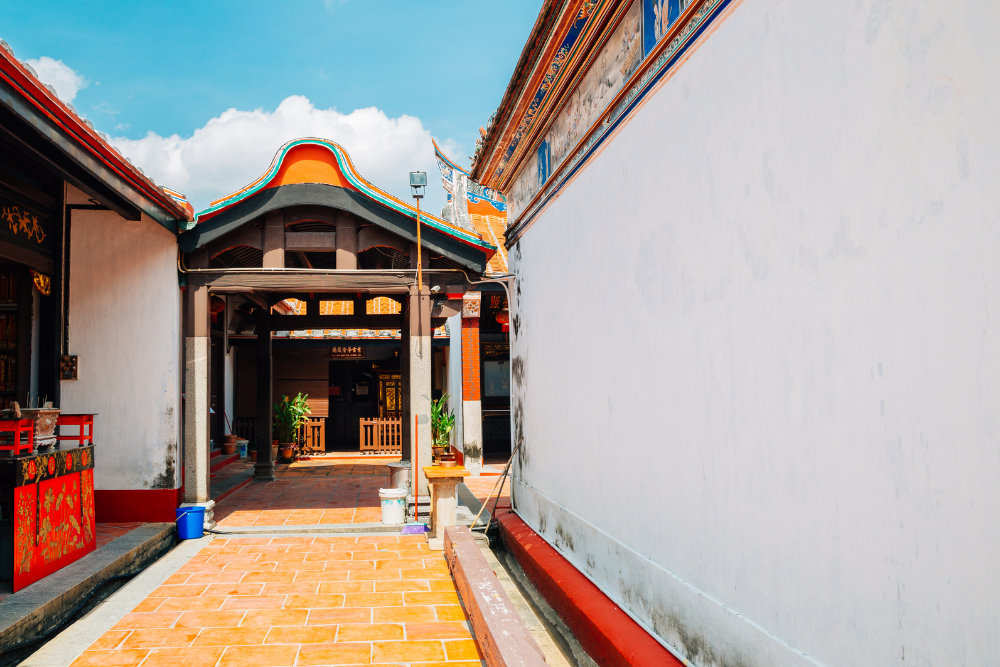
The Cheng Hoon Teng Temple in Melaka is Malaysia’s oldest Taoist temple, dating back to 1646. It is dedicated to the worship of the Taoist deities, and its intricate architecture and historic significance make it one of the must-visit temples in the country.
Why It’s Special:
- Architectural Beauty: The temple features beautiful traditional Chinese architecture, with intricate wood carvings, colorful tiles, and ornate details that showcase the craftsmanship of the period.
- Cultural Importance: As one of the oldest temples in the country, Cheng Hoon Teng Temple is an important symbol of Melaka’s cultural history and Chinese heritage.
- Serene Atmosphere: The peaceful and quiet ambiance of the temple makes it a perfect spot for reflection and appreciation of the local religious practices.
Tips for Visiting:
- Take time to learn about the temple’s history and significance to the early Chinese community in Melaka.
- The temple is located near other historical landmarks in Melaka, so it can easily be part of a walking tour of the city.
Conclusion
Exploring the ancient temples of Malaysia offers a unique insight into the country’s rich cultural and religious history. From the towering Lord Murugan statue at Batu Caves to the serene beauty of the Kek Lok Si Temple in Penang, each temple showcases a different aspect of Malaysia’s spiritual diversity and architectural splendor. Whether you are interested in Hindu, Buddhist, or Taoist traditions, these temples provide a sense of tranquility and reverence that will stay with you long after your visit.



